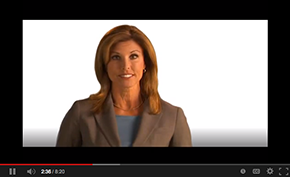By Maryellen Coggins, Chairperson, Actuarial Standards Board
The late great Jackie Robinson once said that, unlike baseball, “Life is not a spectator sport.” Neither is actuarial practice, I would argue. The actuarial standards of practice (ASOPs) illustrate this aphorism in that, above all, they require actuaries to take action, by stating what the actuary should do, consider, document, and disclose in the course of performing actuarial services.[1]
Even when an actuary relies on a third party to provide input to, or a component of, the actuarial services, action is required. ASOP No. 1, Introductory Actuarial Standard of Practice, construes the term “reliance” as follows:
“Actuaries frequently rely upon others for information and professional judgments that are pertinent to an assignment. Similarly, actuaries often rely upon others to perform some component of an actuarial analysis. Accordingly, some ASOPs permit the actuary to rely in good faith upon such individuals, subject to appropriate disclosure of such reliance, if required by applicable ASOPs (for example, ASOP Nos. 23, Data Quality, and 41 [Actuarial Communications]).”
The actuary’s reliance upon others for data and other information is not intended to be passive. The ASOPs generally refer the actuary to the guidance set out in ASOP Nos. 23 and 41. These cross-practice standards anticipate, in effect, that the actuary will assess the reasonableness and suitability of the data or other information received from others and formulate appropriate disclosures. In an important sense, the actuary’s assessment of data and information received from a third party effectively forms the basis for the actuary’s exercise of reliance “in good faith.”
ASOP No. 23 says that the actuary “may rely on data supplied by others,”[2] but that such reliance is subject to the ASOP’s guidance on the review and use of data. For example, the actuary should review the data (or disclose that the actuary has not performed a review and why, as well as “any resulting limitations on the use of the actuarial work product”).[3] During the review, the actuary should make a “reasonable effort to identify data values that are questionable or relationships that are significantly inconsistent.” If the actuary believes that questionable data could affect the analysis, the actuary should consider improving the quality of the data and disclose “any unresolved data values that the actuary believes could have a significant effect on the analysis,” as well as any steps the actuary has taken to improve the data.[4] The actuary also “should make a professional judgment” about whether the data are of acceptable quality to perform the analysis, can be enhanced, can be used with disclosure of uncertainty or bias, or cannot be used.[5] Similarly, ASOP No. 23 requires actuaries to assess whether other “information relevant to the use of data,” such as contract provisions and plan documents received from third parties, is suitable for use.[6]
If review and assessment form the first half of this participatory endeavor, disclosure forms the second half. ASOP No. 23 requires actuaries to disclose “the extent of the actuary’s reliance on data and other information relevant to the use of the data supplied by others,” along with their assessments of it.[7] ASOP No. 41 further establishes that an actuarial communication relying on other sources for data and other information “should define the extent of reliance . . . by stating whether or not checks as to reasonableness have been applied.”[8] If the actuary fails to do so, the actuary assumes responsibility for the actuarial communication.[9]
You might feel a little breathless after reading this partial list of actions that an actuary should take before relying on data and other information from third parties. As we have shown, the ASOPs do not give the actuary a free pass when it comes to reliance, but expect the actuary to step up and assess the data and information, its limitations, and its reasonableness and suitability for use in the task at hand, to improve it where appropriate, and to disclose any limitations that may affect the analysis. Indeed, this is a full-contact and participatory endeavor, not a spectator sport.
(Featured in the October 2017 Actuarial Update.)




